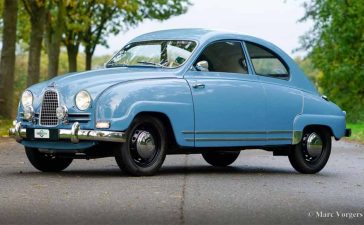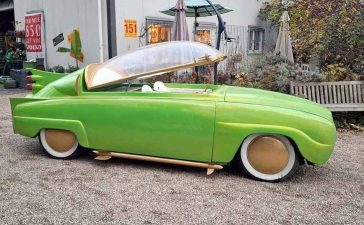Saab has been gone from showroom floors for nearly a decade and a half, yet it remains astonishing how quickly a new wave of nostalgia erupts whenever an established publication turns its gaze toward Trollhättan’s creations. The most recent example comes from Autobild, where German journalists – neither Saab loyalists nor habitual admirers of the Swedish marque – revisit two familiar shapes: a Saab 9-3 SportCombi Aero and a Saab 9-5 SportCombi Aero.

Their review is not driven by club affection, enthusiast folklore, or the warmth of personal experience. It is a cold, outside-in observation by writers who assess the cars purely on merit, age, engineering, and the emotional afterglow of a brand that once carved its own lane in Europe’s automotive landscape. And precisely because the review is independent, detached, and essentially free of Saab bias, the final impression is far more meaningful for the Saab community.
In this SaabPlanet deep dive, we examine how Autobild’s team interprets the final generation of “true” Saabs, what they praise, what they criticize, and why – even from a non-enthusiast perspective – the two Aero wagons continue to stand apart. Their full article is available on Autobild’s website, and we invite readers to explore it; what follows here is our analytical retelling and contextual commentary based on their text.
Aero At Both Ends: Why Autobild Chose The Two Wagons
Autobild approaches the comparison with a simple premise: if you want to understand Saab in the 21st century, you study the wagons. The editorial choice is revealing. Instead of pairing a 9-3 sedan with a 9-5 saloon – the statistically common formats in Germany during their prime selling years – the journalists select two Aero SportCombis, the versions that, in their view, best represent the brand’s late-era identity.
Their reasoning follows a clear line:
- The Saab 9-3 sedan was never the customer favorite, capturing only around 9% of buyers in the early 2000s.
- The Caonvertible and the SportCombi were the darlings of the market, expressing the lifestyle and design language buyers expected from Saab.
- The Saab 9-5 Aero, meanwhile, became synonymous with the model in enthusiast circles – a nameplate that defined the performance chapter of the brand’s mature years.
From this vantage point, Autobild sets the tone: these two cars are not outliers but representatives of what Saab stood for as the curtain slowly drew toward its final act. And by placing two Aeros side by side, they test the Swedish ethos on its home turf – turbocharged longitudinal comfort and design eccentricity wrapped in practicality.
What is striking is how readily they acknowledge the emotional heft Saab still carries. Nearly 15 years after the brand’s collapse and almost 30 years after the 9-5 first premiered, they admit that the “phantom pain” of Saab’s absence is still felt in Europe’s automotive consciousness. That admission alone sets this review apart: even for outsiders, Saab’s disappearance left a void no company has filled since.
The Saab 9-5 Aero: A Wagon That Refused To Behave Like Anything Else
Autobild begins its retrospective with the elder statesman – the 1999 Saab 9-5 Aero SportCombi – early-production, Cosmic Blue, and representing a time when Saab’s unique character still flowed unfiltered through cabin layout, mechanical choices, and driver-centric philosophy.
They remind their readers that the 9-5 launched in 1997 exclusively as a sedan, a move that initially felt almost sacrilegious. The classic Saab hatchback silhouette, part of the company’s DNA since the 1960s, vanished overnight. Only in early 1999 did the wagon arrive, finally giving fans relief, and with it the Aero badge – the specification that would define the model’s identity for the next decade.
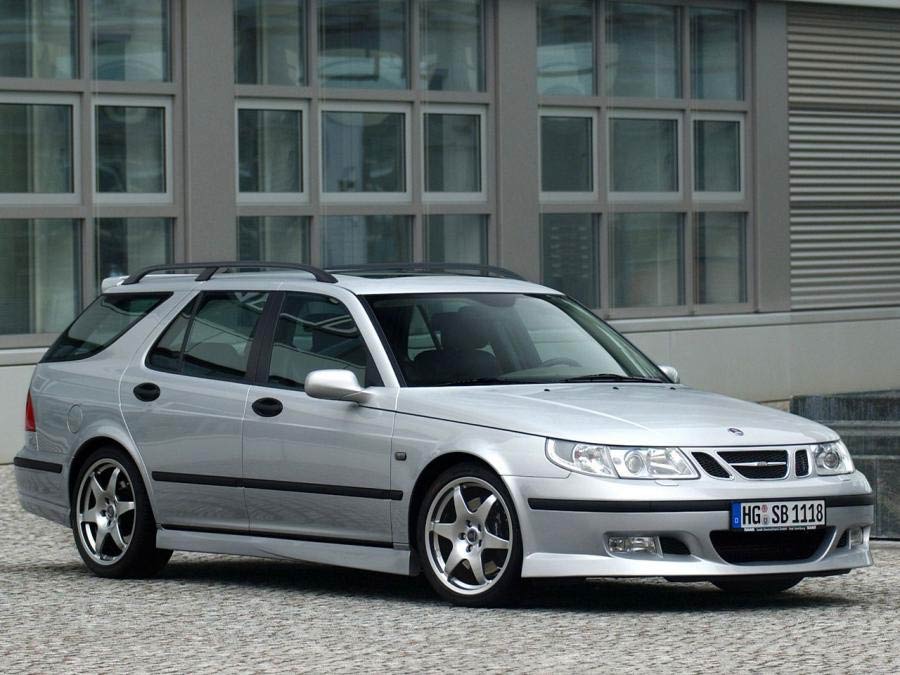
Autobild’s mechanical assessment is unsentimental yet appreciative. They emphasize that Saab power is never about absolute numbers; instead, the brand shaped its philosophy around smooth torque delivery, balanced boost, and refined long-distance composure. The early 9-5 Aero’s 230 hp from the 2.3-liter turbo is neither overwhelming nor timid – it is exactly the kind of measured performance Saab insisted on building, avoiding the sharpness of BMW’s chassis tuning or the formal sterility of Mercedes-Benz sedans.
What they highlight – and what Saab enthusiasts already know – is that this car defines comfort over athleticism. The lower ride height, 17-inch wheels, and Aero branding do not reinvent it into a sports car. Instead, they reinforce its identity as a brisk, stable, long-legged cruiser built for the Scandinavian motorway, where consistency and resilience matter more than mechanical theatrics.
But perhaps the most satisfying moment in Autobild’s narrative arrives when they describe the cabin: the oversize, electrically adjustable seats; the belted-in softness of the cushions; the early introduction of ventilated seating; and the lateral rails in the cargo bay that demonstrate Saab’s obsession with practical, real-world usability. The Night Panel system – dimming all instruments except the speedometer at night – earns its own respectful nod. Even outsiders understand how deeply this single feature symbolizes Saab’s aircraft origin.
In short, Autobild’s perspective confirms what owners already know: the 9-5 Aero SportCombi is one of Saab’s purest late-era expressions – not sporty, not flashy, but confidently different in a way no other manufacturer dared to replicate.
The Saab 9-3 SportCombi Aero: A Sharper Blade With A Narrower Mission
The 9-3 SportCombi Aero receives a more critical evaluation, yet it remains largely positive – and, importantly, honest. Autobild acknowledges that this model was never designed to be a family hauler in the same way the 9-5 was. Instead, it plays a different role: a slimmer, more personal wagon with style-forward proportions and an attitude that leans more toward spirited driving.
The review paints the 9-3 cabin as tighter, more intimate, and less relaxed than the 9-5’s airy interior. But instead of treating this as a design weakness, Autobild interprets it as part of the model’s focus. This is a wagon that feels closer to a well-fitted jacket than a lounge chair, encouraging a more engaged interaction between driver and machine.
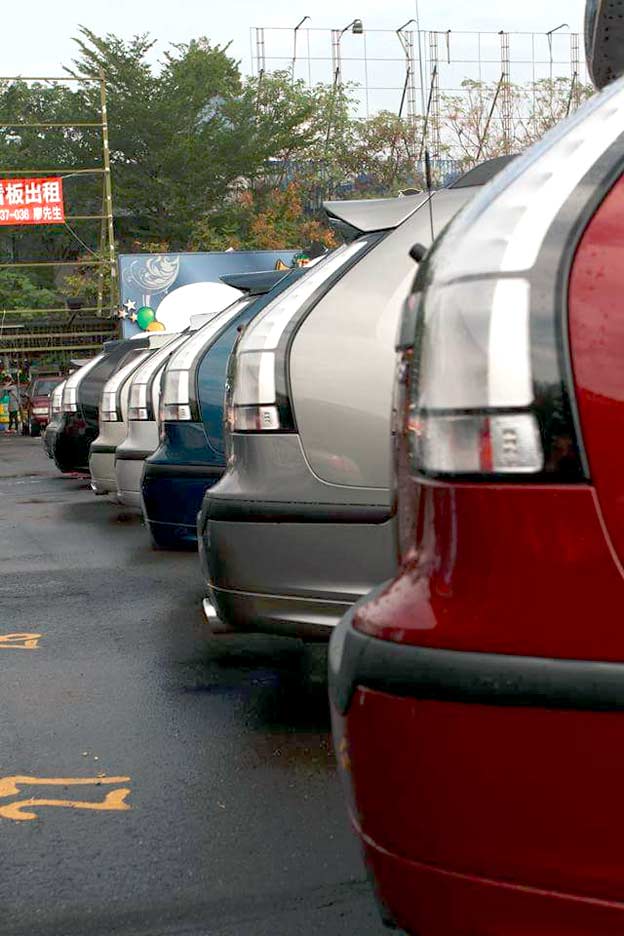
The 2007 facelift, with its sharper Xenon headlamps and more aggressive front-end character, earns praise for giving the 9-3 a purposeful stance without diluting Saab’s design language. Autobild’s authors point out that such styling choices aged unexpectedly well – a testament to the design team at Trollhättan, which learned to build visually coherent cars from limited GM budgets.
The powertrain discussion takes an interesting turn. Autobild spends time on the Holden-sourced 2.8-liter turbocharged V6, describing how unusual it felt inside a Saab engine bay. While the car tested in their article receives tuning influence from Hirsch (raising the output to 280 hp), the journalists note that front-wheel drive struggles to harness the torque cleanly – a fair criticism familiar to many 9-3 Aero V6 owners.

Yet despite that, they still call the 9-3 SportCombi Aero – in its high-spec configuration – a pinnacle of Saab’s turbo philosophy. The formula remains unchanged: boost over displacement, usable power over performance spectacle, and a design that echoes Saab’s enduring pursuit of individuality.
Design Longevity: Why These Wagons Still Look Modern Today
One of the most compelling takeaways in Autobild’s analysis is how visually contemporary both models appear in 2025, especially compared to many early-2000s competitors.
The 9-5 SportCombi, with its expansive glasshouse, balanced proportions, and distinctly Swedish minimalism, looks neither outdated nor nostalgic – it simply looks right. The 9-3 SportCombi, with its sculpted tail lamps and tight rear architecture, maintains a slickness that many modern compact wagons struggle to achieve.
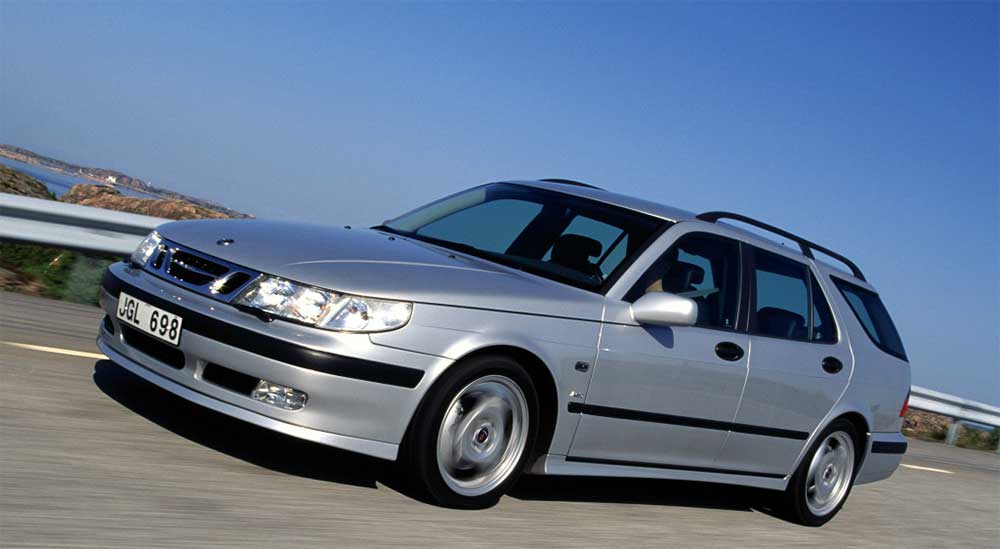
Autobild goes as far as suggesting that Lancia, another storied European brand known for unconventional design choices, could have worn Saab’s aesthetic language well. That comparison reinforces something Saab fans have long understood: these were not cars designed by committee but by a team of designers who knew their brand’s soul and were stubborn enough to preserve it.
Even when viewed from a non-Saab perspective, the design integrity is undeniable.
Looking Back With Distance: What Saab’s Absence Reveals Today
What makes Autobild’s perspective particularly valuable is what is missing: nostalgia, bias, club loyalty, and emotional cushioning. These are not writers who grew up in Saab households or who built careers around Swedish motoring culture. Their observations come from a neutral position, which, paradoxically, makes their admiration far more meaningful.
They openly acknowledge that Saab’s departure from the automotive world created a vacuum still felt across Europe. Not because Saab was the biggest, most profitable, or most technologically advanced brand, but because it was the most unapologetically different in its segment.

In their concluding reflection, Autobild’s Jan-Henrik Muche – who personally owned five Saabs – admits that he still turns his head every time one passes by. He recognizes that the 9-5 carries more character, but he confesses that a well-kept 9-3 Aero 2.0T with 210 hp would be enough to satisfy his longing. That simple sentiment resonates deeply with Saab enthusiasts worldwide: these cars were never about numbers but about the human experience behind the wheel.
When “Outsiders” Recognize What We Already Knew
The most telling element of Autobild’s retrospective is how effortlessly Saab’s core identity shines through, even when evaluated by journalists who approach the brand from a neutral or even skeptical angle. The review, while not written for our community, still confirms the truths Saab enthusiasts have repeated for years:
- Saab’s engineering philosophy was coherent and deliberate, not eccentric for eccentricity’s sake.
- The wagons represent the most complete expression of the brand, especially in Aero form.
- Design longevity remains one of Saab’s strongest legacies, surviving decades of changing automotive trends.
- Even non-enthusiast observers feel the void Saab left behind, something rare for a niche manufacturer.
The 9-3 and 9-5 Aero SportCombis were not designed to dominate market share or chase corporate profit margins. They were built to serve drivers who valued individuality, engineering integrity, and a sense of character that no spreadsheet could quantify.

Autobild’s retrospective does more than review two used wagons – it reminds us how Saab’s unconventional path continues to resonate long after the assembly lines went dark in Trollhättan.
For readers who wish to explore the original German article in full context, Autobild’s complete review is available here: https://www.autobild.de/artikel/saab-9-3-und-9-5-im-rueckspiegel-28397037.html


